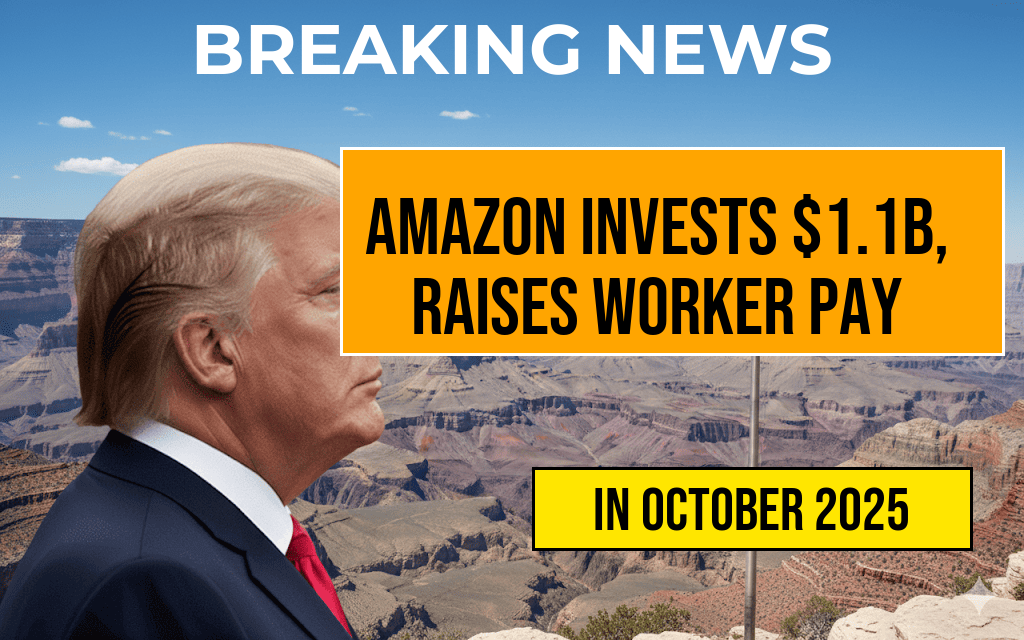Amazon has announced a substantial investment of $1.1 billion aimed at increasing wages for its fulfillment center workers across the United States. This funding boost has elevated the average pay for these employees to over $23 per hour, marking a significant move in the competitive landscape of warehouse employment. The company’s initiative reflects ongoing efforts to address labor shortages, improve worker satisfaction, and enhance operational efficiency amid a challenging retail environment. The wage increase is expected to impact tens of thousands of employees, providing a substantial financial uplift and signaling Amazon’s commitment to strengthening its fulfillment workforce amid rising labor costs and industry pressures.
Details of Amazon’s $1.1 Billion Investment
Scope and Distribution
Amazon’s recent investment focuses primarily on boosting employee wages at fulfillment centers nationwide. The company has not only increased pay but also announced plans to expand benefits and improve working conditions. According to Amazon spokespersons, approximately 500,000 fulfillment workers across the U.S. will see their hourly wages rise, with some locations experiencing increases of up to $3 per hour.
The funds are allocated to several key initiatives:
- Raising baseline wages to over $23 per hour
- Offering signing bonuses in select regions
- Investing in safety and ergonomic improvements
- Expanding training and career development programs
Wage Trends and Industry Comparison
| Company | Average Pay | Additional Benefits |
|---|---|---|
| Amazon | $23+ | Health coverage, stock options, career growth |
| Walmart | $16–$20 | Part-time and full-time benefits |
| FedEx | $20–$22 | Health insurance, retirement plans |
Motivations Behind the Wage Increase
Addressing Labor Shortages
Labor shortages have become a persistent challenge for Amazon and the broader retail logistics sector. As consumer demand continues to grow, particularly for online shopping, the competition for fulfillment center workers has intensified. By increasing wages, Amazon aims to attract new employees and retain existing ones, reducing turnover rates that can disrupt operations.
Enhancing Employee Satisfaction
Worker satisfaction and safety are increasingly critical considerations for Amazon’s management. The company’s efforts to raise pay are complemented by investments in better working conditions and safety protocols. These measures are designed to create a more sustainable and appealing work environment, which could, in turn, improve productivity and reduce absenteeism.
Broader Impact on the Labor Market
Setting Industry Standards
Amazon’s wage hike could influence wage standards across the logistics and e-commerce sectors. As one of the largest employers in the country, the company’s actions often ripple into broader industry practices. Smaller competitors may face pressure to match or exceed these pay levels to remain competitive in attracting talent.
Worker Perceptions and Career Pathways
Workers at Amazon fulfillment centers have historically expressed mixed feelings about employment conditions, with concerns over physical demands and scheduling. Increased wages, along with expanded training programs, aim to improve perceptions of career stability and growth opportunities within the company. Some employees view these enhancements as steps toward more sustainable employment options in a sector often characterized by temporary or gig work.
Economic and Community Implications
Regional Economic Boost
Higher wages at fulfillment centers can contribute positively to local economies, especially in areas where Amazon facilities are significant employers. Increased disposable income for workers often leads to greater spending in nearby businesses, supporting community growth.
Potential for Policy Influence
Amazon’s sizable investment and wage increases may also influence policymakers considering minimum wage legislation and labor protections. The company’s approach might serve as a benchmark for other corporations seeking to balance profitability with fair labor practices.
Looking Ahead
While the $1.1 billion investment signifies a notable shift in Amazon’s employment strategy, industry analysts are watching to see whether these changes will be sustained and how they will impact operational costs and pricing strategies. The move underscores the escalating importance of fair wages and worker well-being in the rapidly evolving landscape of e-commerce and logistics.
For more insights into Amazon’s employment strategies and industry trends, visit Wikipedia’s page on Amazon or Forbes’ coverage of corporate labor practices.
Frequently Asked Questions
What is the total investment Amazon announced for its fulfillment centers?
Amazon has announced a significant investment of 1.1 billion dollars to enhance its fulfillment operations and worker benefits.
How has Amazon’s investment impacted fulfillment workers’ wages?
The investment has led to an increase in the average pay for fulfillment workers to over 23 dollars per hour.
Are there any additional benefits for Amazon fulfillment workers due to this investment?
While the article primarily highlights wage increases, such investments typically support improved benefits, safety measures, and working conditions for fulfillment workers.
Which areas or facilities are expected to benefit from Amazon’s $1.1 billion investment?
The funds are aimed at upgrading fulfillment centers across various locations, enhancing automation, infrastructure, and worker amenities.
What does this investment signify for Amazon’s overall strategy?
This substantial investment demonstrates Amazon’s commitment to competitive wages and investing in its workforce, aiming to improve operational efficiency and employee satisfaction.






